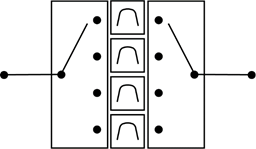Today, electronic warfare applications need to detect a wide variety of signals ranging from UHF communications to GPS and other data signals in the L band to high-frequency radar signals that can fall in the X, S, or K bands. Therefore, these receivers need to operate across an extremely wide range of bandwidths to pick up and understand signals anywhere from 300MHz to 20GHz and beyond. However, a basic general wideband antenna isn’t sufficient for these applications because selectivity is needed to determine what you are actually listening to. Additionally, as if the task of designing an ultra-wideband receiver with selectivity wasn’t challenging enough, RF designers are simultaneously facing pressure to reduce the size, weight, and power (SWaP) of these applications as well.
In this webinar, we breakdown how you can address these conflicting demands by diving into the building blocks of the receivers used in electronic warfare applications with a focus on filtering needs and technologies. We cover how to build a simplified switch filter bank like the example in Figure 1 to perform pre-selection for “listening in” on the appropriate band of interest.

Figure 1. A diagram of a simplified switch filter bank that is designed to listen into signals from the UHF to the K band.
This discussion also looks at technologies to consider, including new offerings from Knowles Precision Devices, for optimizing filter size with respect to SWAP and required functionality including how high K dielectrics are allowing filter designers to focus on miniaturization.
We also discuss the approach outlined in Figure 2 that we commonly recommend for building a wideband digital receiver. In this example, the input received by the filter bank can range anywhere between 300MHz to 20GHz while the output needs to be a set intermediate frequency (IF) that can be processed by an ADC with sufficient instantaneous bandwidth to handle the entire channel of interest.

Figure 2. This approach to designing a wideband digital receiver can handle the complex frequency planning involved in converting a wideband input signal.
This webinar was originally presented live in collaboration with Microwave Journal and RFMW and you can view the on-demand version here.



